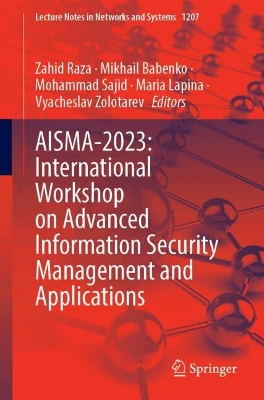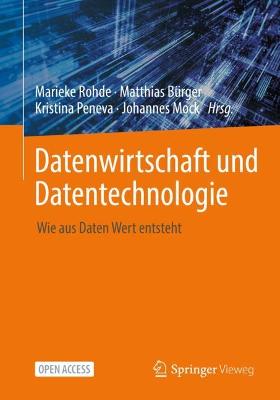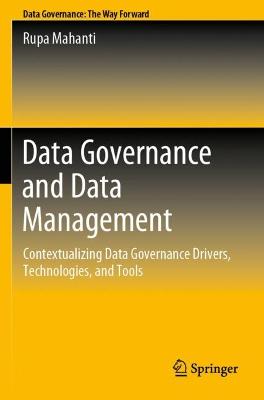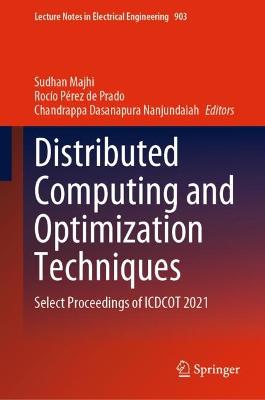Network Security
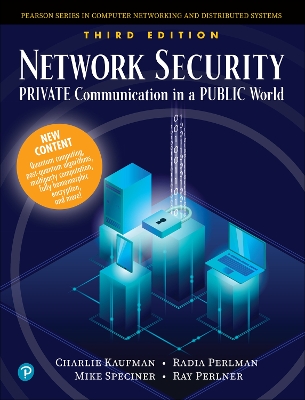 portes grátis
portes grátis
Network Security
Private Communication in a Public World
Speciner, Mike; Perlman, Radia; Kaufman, Charlie; Perlner, Ray
Pearson Education (US)
10/2022
544
Dura
Inglês
9780136643609
15 a 20 dias
1.1 Opinions, Products
1.2 Roadmap to the Book
1.3 Terminology
1.4 Notation
1.5 Cryptographically Protected Sessions
1.6 Active and Passive Attacks
1.7 Legal Issues
1.7.1 Patents
1.7.2 Government Regulations
1.8 Some Network Basics
1.8.1 Network Layers
1.8.2 TCP and UDP Ports
1.8.3 DNS (Domain Name System)
1.8.4 HTTP and URLs
1.8.5 Web Cookies
1.9 Names for Humans
1.10 Authentication and Authorization
1.10.1 ACL (Access Control List)
1.10.2 Central Administration/Capabilities
1.10.3 Groups
1.10.4 Cross-Organizational and Nested Groups
1.10.5 Roles
1.11 Malware: Viruses, Worms, Trojan Horses
1.11.1 Where Does Malware Come From?
1.11.2 Virus Checkers
1.12 Security Gateway
1.12.1 Firewall
1.12.2 Application-Level Gateway/Proxy
1.12.3 Secure Tunnels
1.12.4 Why Firewalls Don't Work
1.13 Denial-of-Service (DoS) Attacks
1.14 NAT (Network Address Translation)
1.14.1 Summary
Chapter 2 Introduction to Cryptography
2.1 Introduction
2.1.1 The Fundamental Tenet of Cryptography
2.1.2 Keys
2.1.3 Computational Difficulty
2.1.4 To Publish or Not to Publish
2.1.5 Earliest Encryption
2.1.6 One-Time Pad (OTP)
2.2 Secret Key Cryptography
2.2.1 Transmitting Over an Insecure Channel
2.2.2 Secure Storage on Insecure Media
2.2.3 Authentication
2.2.4 Integrity Check
2.3 Public Key Cryptography
2.3.1 Transmitting Over an Insecure Channel
2.3.2 Secure Storage on Insecure Media
2.3.3 Authentication
2.3.4 Digital Signatures
2.4 Hash Algorithms
2.4.1 Password Hashing
2.4.2 Message Integrity
2.4.3 Message Fingerprint
2.4.4 Efficient Digital Signatures
2.5 Breaking an Encryption Scheme
2.5.1 Ciphertext Only
2.5.2 Known Plaintext
2.5.3 Chosen Plaintext
2.5.4 Chosen Ciphertext
2.5.5 Side-Channel Attacks
2.6 Random Numbers
2.6.1 Gathering Entropy
2.6.2 Generating Random Seeds
2.6.3 Calculating a Pseudorandom Stream from the Seed
2.6.4 Periodic Reseeding
2.6.5 Types of Random Numbers
2.6.6 Noteworthy Mistakes
2.7 Numbers
2.7.1 Finite Fields
2.7.2 Exponentiation
2.7.3 Avoiding a Side-Channel Attack
2.7.4 Types of Elements used in Cryptography
2.7.5 Euclidean Algorithm
2.7.6 Chinese Remainder Theorem
2.8 Homework
Chapter 3 Secret Key Cryptography
3.1 Introduction
3.2 Generic Block Cipher Issues
3.2.1 Blocksize, Keysize
3.2.2 Completely General Mapping
3.2.3 Looking Random
3.3 Constructing a Practical Block Cipher
3.3.1 Per-Round Keys
3.3.2 S-boxes and Bit Shuffles
3.3.3 Feistel Ciphers
3.4 Choosing Constants
3.5 Data Encryption Standard (DES)
3.5.1 DES Overview
3.5.2 The Mangler Function
3.5.3 Undesirable Symmetries
3.5.4 What's So Special About DES?
3.6 3DES (Multiple Encryption DES)
3.6.1 How Many Encryptions?
3.6.1.1 Encrypting Twice with the Same Key
3.6.1.2 Encrypting Twice with Two Keys
3.6.1.3 Triple Encryption with Only Two Keys
3.6.2 Why EDE Rather Than EEE?
3.7 Advanced Encryption Standard (AES)
3.7.1 Origins of AES
3.7.2 Broad Overview
3.7.3 AES Overview
3.7.4 Key Expansion
3.7.5 Inverse Rounds
3.7.6 Software Implementations of AES
3.8 RC4
3.9 Homework
Chapter 4 Modes of Operation
4.1 Introduction
4.2 Encrypting a Large Message
4.2.1 ECB (Electronic Code Book)
4.2.2 CBC (Cipher Block Chaining)
4.2.2.1 Randomized ECB
4.2.2.2 CBC
4.2.2.3 CBC Threat-Modifying Ciphertext Blocks
4.2.3 CTR (Counter Mode)
4.2.3.1 Choosing IVs for CTR Mode
4.2.4 XEX (XOR Encrypt XOR)
4.2.5 XTS (XEX with Ciphertext Stealing)
4.3 Generating MACs
4.3.1 CBC-MAC
4.3.1.1 CBC Forgery Attack
4.3.2 CMAC
4.3.3 GMAC
4.3.3.1 GHASH
4.3.3.2 Transforming GHASH into GMAC
4.4 Ensuring Privacy and Integrity Together
4.4.1 CCM (Counter with CBC-MAC)
4.4.2 GCM (Galois/Counter Mode)
4.5 Performance Issues
4.6 Homework
Chapter 5 Cryptographic Hashes
5.1 Introduction
5.2 The Birthday Problem
5.3 A Brief History of Hash Functions
5.4 Nifty Things to Do with a Hash
5.4.1 Digital Signatures
5.4.2 Password Database
5.4.3 Secure Shorthand of Larger Piece of Data
5.4.4 Hash Chains
5.4.5 Blockchain
5.4.6 Puzzles
5.4.7 Bit Commitment
5.4.8 Hash Trees
5.4.9 Authentication
5.4.10 Computing a MAC with a Hash
5.4.11 HMAC
5.4.12 Encryption with a Secret and a Hash Algorithm
5.5 Creating a Hash Using a Block Cipher
5.6 Construction of Hash Functions
5.6.1 Construction of MD4, MD5, SHA-1 and SHA-2
5.6.2 Construction of SHA-3
5.7 Padding
5.7.1 MD4, MD5, SHA-1, and SHA2-256 Message Padding
5.7.2 SHA-3 Padding Rule
5.8 The Internal Encryption Algorithms
5.8.1 SHA-1 Internal Encryption Algorithm
5.8.2 SHA-2 Internal Encryption Algorithm
5.9 SHA-3 f Function (Also Known as KECCAK-f)
5.10 Homework
Chapter 6 First-Generation Public Key Algorithms
6.1 Introduction
6.2 Modular Arithmetic
6.2.1 Modular Addition
6.2.2 Modular Multiplication
6.2.3 Modular Exponentiation
6.2.4 Fermat's Theorem and Euler's Theorem
6.3 RSA
6.3.1 RSA Algorithm
6.3.2 Why Does RSA Work?
6.3.3 Why Is RSA Secure?
6.3.4 How Efficient Are the RSA Operations?
6.3.4.1 Exponentiating with Big Numbers
6.3.4.2 Generating RSA Keys
6.3.4.3 Why a Non-Prime Has Multiple Square Roots of One
6.3.4.4 Having a Small Constant e
6.3.4.5 Optimizing RSA Private Key Operations
6.3.5 Arcane RSA Threats
6.3.5.1 Smooth Numbers
6.3.5.2 The Cube Root Problem
6.3.6 Public-Key Cryptography Standard (PKCS)
6.3.6.1 Encryption
6.3.6.2 The Million-Message Attack
6.3.6.3 Signing
6.4 Diffie-Hellman
6.4.1 MITM (Meddler-in-the-Middle) Attack
6.4.2 Defenses Against MITM Attack
6.4.3 Safe Primes and the Small-Subgroup Attack
6.4.4 ElGamal Signatures
6.5 Digital Signature Algorithm (DSA)
6.5.1 The DSA Algorithm
6.5.2 Why Is This Secure?
6.5.3 Per-Message Secret Number
6.6 How Secure Are RSA and Diffie-Hellman?
6.7 Elliptic Curve Cryptography (ECC)
6.7.1 Elliptic Curve Diffie-Hellman (ECDH)
6.7.2 Elliptic Curve Digital Signature Algorithm (ECDSA)
6.8 Homework
Chapter 7 Quantum Computing
7.1 What Is a Quantum Computer?
7.1.1 A Preview of the Conclusions
7.1.2 First, What Is a Classical Computer?
7.1.3 Qubits and Superposition
7.1.3.1 Example of a Qubit
7.1.3.2 Multi-Qubit States and Entanglement
7.1.4 States and Gates as Vectors and Matrices
7.1.5 Becoming Superposed and Entangled
7.1.6 Linearity
7.1.6.1 No Cloning Theorem
7.1.7 Operating on Entangled Qubits
7.1.8 Unitarity
7.1.9 Doing Irreversible Operations by Measurement
7.1.10 Making Irreversible Classical Operations Reversible
7.1.11 Universal Gate Sets
7.2 Grover's Algorithm
7.2.1 Geometric Description
7.2.2 How to Negate the Amplitude of |k?
7.2.3 How to Reflect All the Amplitudes Across the Mean
7.2.4 Parallelizing Grover's Algorithm
7.3 Shor's Algorithm
7.3.1 Why Exponentiation mod n Is a Periodic Function
7.3.2 How Finding the Period of ax mod n Lets You Factor n
7.3.3 Overview of Shor's Algorithm
7.3.4 Converting to the Frequency Graph-Introduction
7.3.5 The Mechanics of Converting to the Frequency Graph
7.3.6 Calculating the Period
7.3.7 Quantum Fourier Transform
7.4 Quantum Key Distribution (QKD)
7.4.1 Why It's Sometimes Called Quantum Encryption
7.4.2 Is Quantum Key Distribution Important?
7.5 How Hard Are Quantum Computers to Build?
7.6 Quantum Error Correction
7.7 Homework
Chapter 8 Post-Quantum Cryptography
8.1 Signature and/or Encryption Schemes
8.1.1 NIST Criteria for Security Levels
8.1.2 Authentication
8.1.3 Defense Against Dishonest Ciphertext
8.2 Hash-based Signatures
8.2.1 Simplest Scheme - Signing a Single Bit
8.2.2 Signing an Arbitrary-sized Message
8.2.3 Signing Lots of Messages
8.2.4 Deterministic Tree Generation
8.2.5 Short Hashes
8.2.6 Hash Chains
8.2.7 Standardized Schemes
8.2.7.1 Stateless Schemes
8.3 Lattice-Based Cryptography
8.3.1 A Lattice Problem
8.3.2 Optimization: Matrices with Structure
8.3.3 NTRU-Encryption Family of Lattice Encryption Schemes
8.3.3.1 Bob Computes a (Public, Private) Key Pair
8.3.3.2 How Bob Decrypts to Find m
8.3.3.3 How Does this Relate to Lattices?
8.3.4 Lattice-Based Signatures
8.3.4.1 Basic Idea
8.3.4.2 Insecure Scheme
8.3.4.3 Fixing the Scheme
8.3.5 Learning with Errors (LWE)
8.3.5.1 LWE Optimizations
8.3.5.2 LWE-based NIST Submissions
8.4 Code-based Schemes
8.4.1 Non-cryptographic Error-correcting Codes
8.4.1.1 Invention Step
8.4.1.2 Codeword Creation Step
8.4.1.3 Misfortune Step
8.4.1.4 Diagnosis Step
8.4.2 The Parity-Check Matrix
8.4.3 Cryptographic Public Key Code-based Scheme
8.4.3.1 Neiderreiter Optimization
8.4.3.2 Generating a Public Key Pair
8.4.3.3 Using Circulant Matrices
8.5 Multivariate Cryptography
8.5.1 Solving Linear Equations
8.5.2 Quadratic Polynomials
8.5.3 Polynomial Systems
8.5.4 Multivariate Signature Systems
8.5.4.1 Multivariate Public Key Signatures
8.6 Homework
Chapter 9 Authentication of People
9.1 Password-based Authentication
9.1.1 Challenge-Response Based on Password
9.1.2 Verifying Passwords
9.2 Address-based Authentication
9.2.1 Network Address Impersonation
9.3 Biometrics
9.4 Cryptographic Authentication Protocols
9.5 Who Is Being Authenticated?
9.6 Passwords as Cryptographic Keys
9.7 On-Line Password Guessing
9.8 Off-Line Password Guessing
9.9 Using the Same Password in Multiple Places
9.10 Requiring Frequent Password Changes
9.11 Tricking Users into Divulging Passwords
9.12 Lamport's Hash
9.13 Password Managers
9.14 Web Cookies
9.15 Identity Providers (IDPs)
9.16 Authentication Tokens
9.16.1 Disconnected Tokens
9.16.2 Public Key Tokens
9.17 Strong Password Protocols
9.17.1 Subtle Details
9.17.2 Augmented Strong Password Protocols
9.17.3 SRP (Secure Remote Password)
9.18 Credentials Download Protocols
9.19 Homework
Chapter 10 Trusted Intermediaries
10.1 Introduction
10.2 Functional Comparison
10.3 Kerberos
10.3.1 KDC Introduces Alice to Bob
10.3.2 Alice Contacts Bob
10.3.3 Ticket Granting Ticket (TGT)
10.3.4 Interrealm Authentication
10.3.5 Making Password-Guessing Attacks Difficult
10.3.6 Double TGT Protocol
10.3.7 Authorization Information
10.3.8 Delegation
10.4 PKI
10.4.1 Some Terminology
10.4.2 Names in Certificates
10.5 Website Gets a DNS Name and Certificate
10.6 PKI Trust Models
10.6.1 Monopoly Model
10.6.2 Monopoly plus Registration Authorities (RAs)
10.6.3 Delegated CAs
10.6.4 Oligarchy
10.6.5 Anarchy Model
10.6.6 Name Constraints
10.6.7 Top-Down with Name Constraints
10.6.8 Multiple CAs for Any Namespace Node
10.6.9 Bottom-Up with Name Constraints
10.6.9.1 Functionality of Up-Links
10.6.9.2 Functionality of Cross-Links
10.6.10 Name Constraints in PKIX Certificates
10.7 Building Certificate Chains
10.8 Revocation
10.8.1 CRL (Certificate Revocation list
10.8.2 Online Certificate Status Protocol (OCSP)
10.8.3 Good-Lists vs. Bad-Lists
10.9 Other Information in a PKIX Certificate
10.10 Issues with Expired Certificates
10.11 DNSSEC (DNS Security Extensions)
10.12 Homework
Chapter 11 Communication Session Establishment
11.1 One-way Authentication of Alice
11.1.1 Timestamps vs. Challenges
11.1.2 One-Way Authentication of Alice using a Public Key
11.2 Mutual Authentication
11.2.1 Reflection Attack
11.2.2 Timestamps for Mutual Authentication
11.3 Integrity/Encryption for Data
11.3.1 Session Key Based on Shared Secret Credentials
11.3.2 Session Key Based on Public Key Credentials
11.3.3 Session Key Based on One-Party Public Keys
11.4 Nonce Types
11.5 Intentional MITM
11.6 Detecting MITM
11.7 What Layer?
11.8 Perfect Forward Secrecy
11.9 Preventing Forged Source Addresses
11.9.1 Allowing Bob to Be Stateless in TCP
11.9.2 Allowing Bob to Be Stateless in IPsec
11.10 Endpoint Identifier Hiding
11.11 Live Partner Reassurance
11.12 Arranging for Parallel Computation
11.13 Session Resumption/Multiple Sessions
11.14 Plausible Deniability
11.15 Negotiating Crypto Parameters
11.15.1 Suites vs. a la Carte
11.15.2 Downgrade Attack
11.16 Homework
Chapter 12 IPsec
12.1 IPsec Security Associations
12.1.1 Security Association Database
12.1.2 Security Policy Database
12.1.3 IKE-SAs and Child-SAs
12.2 IKE (Internet Key Exchange Protocol)
12.3 Creating a Child-SA
12.4 AH and ESP
12.4.1 ESP Integrity Protection
12.4.2 Why Protect the IP Header?
12.4.3 Tunnel, Transport Mode
12.4.4 IPv4 Header
12.4.5 IPv6 Header
12.5 AH (Authentication Header)
12.6 ESP (Encapsulating Security Payload)
12.7 Comparison of Encodings
12.8 Homework
Chapter 13 SSL/TLS and SSH
13.1 Using TCP
13.2 StartTLS
13.3 Functions in the TLS Handshake
13.4 TLS 1.2 (and Earlier) Basic Protocol
13.5 TLS 1.3
13.6 Session Resumption
13.7 PKI as Deployed by TLS
13.8 SSH (Secure Shell)
13.8.1 SSH Authentication
13.8.2 SSH Port Forwarding
13.9 Homework
Chapter 14 Electronic Mail Security
14.1 Distribution Lists
14.2 Store and Forward
14.3 Disguising Binary as Text
14.4 HTML-Formatted Email
14.5 Attachments
14.6 Non-cryptographic Security Features
14.6.1 Spam Defenses
14.7 Malicious Links in Email
14.8 Data Loss Prevention (DLP)
14.9 Knowing Bob's Email Address
14.10 Self-Destruct, Do-Not-Forward,
14.11 Preventing Spoofing of From Field
14.12 In-Flight Encryption
14.13 End-to-End Signed and Encrypted Email
14.14 Encryption by a Server
14.15 Message Integrity
14.16 Non-Repudiation
14.17 Plausible Deniability
14.18 Message Flow Confidentiality
14.19 Anonymity
14.20 Homework
Chapter 15 Electronic Money
15.1 ECASH
15.2 Offline eCash
15.2.1 Practical Attacks
15.3 Bitcoin
15.3.1 Transactions
15.3.2 Bitcoin Addresses
15.3.3 Blockchain
15.3.4 The Ledger
15.3.5 Mining
15.3.6 Blockchain Forks
15.3.7 Why Is Bitcoin So Energy-Intensive?
15.3.8 Integrity Checks: Proof of Work vs. Digital Signatures
15.3.9 Concerns
15.4 Wallets for Electronic Currency
15.5 Homework
Chapter 16 Cryptographic Tricks
16.1 Secret Sharing
16.2 Blind Signature
16.3 Blind Decryption
16.4 Zero-Knowledge Proofs
16.4.1 Graph Isomorphism ZKP
16.4.2 Proving Knowledge of a Square Root
16.4.3 Noninteractive ZKP
16.5 Group Signatures
16.5.1 Trivial Group Signature Schemes
16.5.1.1 Single Shared Key
16.5.1.2 Group Membership Certificate
16.5.1.3 Multiple Group Membership Certificates
16.5.1.4 Blindly Signed Multiple Group Membership Certificates
16.5.2 Ring Signatures
16.5.3 DAA (Direct Anonymous Attestation)
16.5.4 EPID (Enhanced Privacy ID)
16.6 Circuit Model
16.7 Secure Multiparty Computation (MPC)
16.8 Fully Homomorphic Encryption (FHE)
16.8.1 Bootstrapping
16.8.2 Easy-to-Understand Scheme
16.9 Homework
Chapter 17 Folklore
17.1 Misconceptions
17.2 Perfect Forward Secrecy
17.3 Change Encryption Keys Periodically
17.4 Don't Encrypt without Integrity Protection
17.5 Multiplexing Flows over One Secure Session
17.5.1 The Splicing Attack
17.5.2 Service Classes
17.5.3 Different Cryptographic Algorithms
17.6 Using Different Secret Keys
17.6.1 For Initiator and Responder in Handshake
17.6.2 For Encryption and Integrity
17.6.3 In Each Direction of a Secure Session
17.7 Using Different Public Keys
17.7.1 Use Different Keys for Different Purposes
17.7.2 Different Keys for Signing and Encryption
17.8 Establishing Session Keys
17.8.1 Have Both Sides Contribute to the Master Key
17.8.2 Don't Let One Side Determine the Key
17.9 Hash in a Constant When Hashing a Password
17.10 HMAC Rather than Simple Keyed Hash
17.11 Key Derivation
17.12 Use of Nonces in Protocols
17.13 Creating an Unpredictable Nonce
17.14 Compression
17.15 Minimal vs. Redundant Designs
17.16 Overestimate the Size of Key
17.17 Hardware Random Number Generators
17.18 Put Checksums at the End of Data
17.19 Forward Compatibility
17.19.1 Options
17.19.2 Version Numbers
17.19.2.1 Version Number Field Must Not Move
17.19.2.2 Negotiating Highest Version Supported
17.19.2.3 Minor Version Number Field
Glossary
Math
M.1 Introduction
M.2 Some definitions and notation
M.3 Arithmetic
M.4 Abstract Algebra
M.5 Modular Arithmetic
M.5.1 How Do Computers Do Arithmetic?
M.5.2 Computing Inverses in Modular Arithmetic
M.5.2.1 The Euclidean Algorithm
M.5.2.2 The Chinese Remainder Theorem
M.5.3 How Fast Can We Do Arithmetic?
M.6 Groups
M.7 Fields
M.7.1 Polynomials
M.7.2 Finite Fields
M.7.2.1 What Sizes Can Finite Fields Be?
M.7.2.2 Representing a Field
M.8 Mathematics of Rijndael
M.8.1 A Rijndael Round
M.9 Elliptic Curve Cryptography
M.10 Rings
M.11 Linear Transformations
M.12 Matrix Arithmetic
M.12.1 Permutations
M.12.2 Matrix Inverses
M.12.2.1 Gaussian Elimination
M.13 Determinants
M.13.1 Properties of Determinants
M.13.1.1 Adjugate of a Matrix
M.13.2 Proof: Determinant of Product is Product of Determinants
M.14 Homework
Bibliography
9780136643609 TOC 8/2/2022
1.1 Opinions, Products
1.2 Roadmap to the Book
1.3 Terminology
1.4 Notation
1.5 Cryptographically Protected Sessions
1.6 Active and Passive Attacks
1.7 Legal Issues
1.7.1 Patents
1.7.2 Government Regulations
1.8 Some Network Basics
1.8.1 Network Layers
1.8.2 TCP and UDP Ports
1.8.3 DNS (Domain Name System)
1.8.4 HTTP and URLs
1.8.5 Web Cookies
1.9 Names for Humans
1.10 Authentication and Authorization
1.10.1 ACL (Access Control List)
1.10.2 Central Administration/Capabilities
1.10.3 Groups
1.10.4 Cross-Organizational and Nested Groups
1.10.5 Roles
1.11 Malware: Viruses, Worms, Trojan Horses
1.11.1 Where Does Malware Come From?
1.11.2 Virus Checkers
1.12 Security Gateway
1.12.1 Firewall
1.12.2 Application-Level Gateway/Proxy
1.12.3 Secure Tunnels
1.12.4 Why Firewalls Don't Work
1.13 Denial-of-Service (DoS) Attacks
1.14 NAT (Network Address Translation)
1.14.1 Summary
Chapter 2 Introduction to Cryptography
2.1 Introduction
2.1.1 The Fundamental Tenet of Cryptography
2.1.2 Keys
2.1.3 Computational Difficulty
2.1.4 To Publish or Not to Publish
2.1.5 Earliest Encryption
2.1.6 One-Time Pad (OTP)
2.2 Secret Key Cryptography
2.2.1 Transmitting Over an Insecure Channel
2.2.2 Secure Storage on Insecure Media
2.2.3 Authentication
2.2.4 Integrity Check
2.3 Public Key Cryptography
2.3.1 Transmitting Over an Insecure Channel
2.3.2 Secure Storage on Insecure Media
2.3.3 Authentication
2.3.4 Digital Signatures
2.4 Hash Algorithms
2.4.1 Password Hashing
2.4.2 Message Integrity
2.4.3 Message Fingerprint
2.4.4 Efficient Digital Signatures
2.5 Breaking an Encryption Scheme
2.5.1 Ciphertext Only
2.5.2 Known Plaintext
2.5.3 Chosen Plaintext
2.5.4 Chosen Ciphertext
2.5.5 Side-Channel Attacks
2.6 Random Numbers
2.6.1 Gathering Entropy
2.6.2 Generating Random Seeds
2.6.3 Calculating a Pseudorandom Stream from the Seed
2.6.4 Periodic Reseeding
2.6.5 Types of Random Numbers
2.6.6 Noteworthy Mistakes
2.7 Numbers
2.7.1 Finite Fields
2.7.2 Exponentiation
2.7.3 Avoiding a Side-Channel Attack
2.7.4 Types of Elements used in Cryptography
2.7.5 Euclidean Algorithm
2.7.6 Chinese Remainder Theorem
2.8 Homework
Chapter 3 Secret Key Cryptography
3.1 Introduction
3.2 Generic Block Cipher Issues
3.2.1 Blocksize, Keysize
3.2.2 Completely General Mapping
3.2.3 Looking Random
3.3 Constructing a Practical Block Cipher
3.3.1 Per-Round Keys
3.3.2 S-boxes and Bit Shuffles
3.3.3 Feistel Ciphers
3.4 Choosing Constants
3.5 Data Encryption Standard (DES)
3.5.1 DES Overview
3.5.2 The Mangler Function
3.5.3 Undesirable Symmetries
3.5.4 What's So Special About DES?
3.6 3DES (Multiple Encryption DES)
3.6.1 How Many Encryptions?
3.6.1.1 Encrypting Twice with the Same Key
3.6.1.2 Encrypting Twice with Two Keys
3.6.1.3 Triple Encryption with Only Two Keys
3.6.2 Why EDE Rather Than EEE?
3.7 Advanced Encryption Standard (AES)
3.7.1 Origins of AES
3.7.2 Broad Overview
3.7.3 AES Overview
3.7.4 Key Expansion
3.7.5 Inverse Rounds
3.7.6 Software Implementations of AES
3.8 RC4
3.9 Homework
Chapter 4 Modes of Operation
4.1 Introduction
4.2 Encrypting a Large Message
4.2.1 ECB (Electronic Code Book)
4.2.2 CBC (Cipher Block Chaining)
4.2.2.1 Randomized ECB
4.2.2.2 CBC
4.2.2.3 CBC Threat-Modifying Ciphertext Blocks
4.2.3 CTR (Counter Mode)
4.2.3.1 Choosing IVs for CTR Mode
4.2.4 XEX (XOR Encrypt XOR)
4.2.5 XTS (XEX with Ciphertext Stealing)
4.3 Generating MACs
4.3.1 CBC-MAC
4.3.1.1 CBC Forgery Attack
4.3.2 CMAC
4.3.3 GMAC
4.3.3.1 GHASH
4.3.3.2 Transforming GHASH into GMAC
4.4 Ensuring Privacy and Integrity Together
4.4.1 CCM (Counter with CBC-MAC)
4.4.2 GCM (Galois/Counter Mode)
4.5 Performance Issues
4.6 Homework
Chapter 5 Cryptographic Hashes
5.1 Introduction
5.2 The Birthday Problem
5.3 A Brief History of Hash Functions
5.4 Nifty Things to Do with a Hash
5.4.1 Digital Signatures
5.4.2 Password Database
5.4.3 Secure Shorthand of Larger Piece of Data
5.4.4 Hash Chains
5.4.5 Blockchain
5.4.6 Puzzles
5.4.7 Bit Commitment
5.4.8 Hash Trees
5.4.9 Authentication
5.4.10 Computing a MAC with a Hash
5.4.11 HMAC
5.4.12 Encryption with a Secret and a Hash Algorithm
5.5 Creating a Hash Using a Block Cipher
5.6 Construction of Hash Functions
5.6.1 Construction of MD4, MD5, SHA-1 and SHA-2
5.6.2 Construction of SHA-3
5.7 Padding
5.7.1 MD4, MD5, SHA-1, and SHA2-256 Message Padding
5.7.2 SHA-3 Padding Rule
5.8 The Internal Encryption Algorithms
5.8.1 SHA-1 Internal Encryption Algorithm
5.8.2 SHA-2 Internal Encryption Algorithm
5.9 SHA-3 f Function (Also Known as KECCAK-f)
5.10 Homework
Chapter 6 First-Generation Public Key Algorithms
6.1 Introduction
6.2 Modular Arithmetic
6.2.1 Modular Addition
6.2.2 Modular Multiplication
6.2.3 Modular Exponentiation
6.2.4 Fermat's Theorem and Euler's Theorem
6.3 RSA
6.3.1 RSA Algorithm
6.3.2 Why Does RSA Work?
6.3.3 Why Is RSA Secure?
6.3.4 How Efficient Are the RSA Operations?
6.3.4.1 Exponentiating with Big Numbers
6.3.4.2 Generating RSA Keys
6.3.4.3 Why a Non-Prime Has Multiple Square Roots of One
6.3.4.4 Having a Small Constant e
6.3.4.5 Optimizing RSA Private Key Operations
6.3.5 Arcane RSA Threats
6.3.5.1 Smooth Numbers
6.3.5.2 The Cube Root Problem
6.3.6 Public-Key Cryptography Standard (PKCS)
6.3.6.1 Encryption
6.3.6.2 The Million-Message Attack
6.3.6.3 Signing
6.4 Diffie-Hellman
6.4.1 MITM (Meddler-in-the-Middle) Attack
6.4.2 Defenses Against MITM Attack
6.4.3 Safe Primes and the Small-Subgroup Attack
6.4.4 ElGamal Signatures
6.5 Digital Signature Algorithm (DSA)
6.5.1 The DSA Algorithm
6.5.2 Why Is This Secure?
6.5.3 Per-Message Secret Number
6.6 How Secure Are RSA and Diffie-Hellman?
6.7 Elliptic Curve Cryptography (ECC)
6.7.1 Elliptic Curve Diffie-Hellman (ECDH)
6.7.2 Elliptic Curve Digital Signature Algorithm (ECDSA)
6.8 Homework
Chapter 7 Quantum Computing
7.1 What Is a Quantum Computer?
7.1.1 A Preview of the Conclusions
7.1.2 First, What Is a Classical Computer?
7.1.3 Qubits and Superposition
7.1.3.1 Example of a Qubit
7.1.3.2 Multi-Qubit States and Entanglement
7.1.4 States and Gates as Vectors and Matrices
7.1.5 Becoming Superposed and Entangled
7.1.6 Linearity
7.1.6.1 No Cloning Theorem
7.1.7 Operating on Entangled Qubits
7.1.8 Unitarity
7.1.9 Doing Irreversible Operations by Measurement
7.1.10 Making Irreversible Classical Operations Reversible
7.1.11 Universal Gate Sets
7.2 Grover's Algorithm
7.2.1 Geometric Description
7.2.2 How to Negate the Amplitude of |k?
7.2.3 How to Reflect All the Amplitudes Across the Mean
7.2.4 Parallelizing Grover's Algorithm
7.3 Shor's Algorithm
7.3.1 Why Exponentiation mod n Is a Periodic Function
7.3.2 How Finding the Period of ax mod n Lets You Factor n
7.3.3 Overview of Shor's Algorithm
7.3.4 Converting to the Frequency Graph-Introduction
7.3.5 The Mechanics of Converting to the Frequency Graph
7.3.6 Calculating the Period
7.3.7 Quantum Fourier Transform
7.4 Quantum Key Distribution (QKD)
7.4.1 Why It's Sometimes Called Quantum Encryption
7.4.2 Is Quantum Key Distribution Important?
7.5 How Hard Are Quantum Computers to Build?
7.6 Quantum Error Correction
7.7 Homework
Chapter 8 Post-Quantum Cryptography
8.1 Signature and/or Encryption Schemes
8.1.1 NIST Criteria for Security Levels
8.1.2 Authentication
8.1.3 Defense Against Dishonest Ciphertext
8.2 Hash-based Signatures
8.2.1 Simplest Scheme - Signing a Single Bit
8.2.2 Signing an Arbitrary-sized Message
8.2.3 Signing Lots of Messages
8.2.4 Deterministic Tree Generation
8.2.5 Short Hashes
8.2.6 Hash Chains
8.2.7 Standardized Schemes
8.2.7.1 Stateless Schemes
8.3 Lattice-Based Cryptography
8.3.1 A Lattice Problem
8.3.2 Optimization: Matrices with Structure
8.3.3 NTRU-Encryption Family of Lattice Encryption Schemes
8.3.3.1 Bob Computes a (Public, Private) Key Pair
8.3.3.2 How Bob Decrypts to Find m
8.3.3.3 How Does this Relate to Lattices?
8.3.4 Lattice-Based Signatures
8.3.4.1 Basic Idea
8.3.4.2 Insecure Scheme
8.3.4.3 Fixing the Scheme
8.3.5 Learning with Errors (LWE)
8.3.5.1 LWE Optimizations
8.3.5.2 LWE-based NIST Submissions
8.4 Code-based Schemes
8.4.1 Non-cryptographic Error-correcting Codes
8.4.1.1 Invention Step
8.4.1.2 Codeword Creation Step
8.4.1.3 Misfortune Step
8.4.1.4 Diagnosis Step
8.4.2 The Parity-Check Matrix
8.4.3 Cryptographic Public Key Code-based Scheme
8.4.3.1 Neiderreiter Optimization
8.4.3.2 Generating a Public Key Pair
8.4.3.3 Using Circulant Matrices
8.5 Multivariate Cryptography
8.5.1 Solving Linear Equations
8.5.2 Quadratic Polynomials
8.5.3 Polynomial Systems
8.5.4 Multivariate Signature Systems
8.5.4.1 Multivariate Public Key Signatures
8.6 Homework
Chapter 9 Authentication of People
9.1 Password-based Authentication
9.1.1 Challenge-Response Based on Password
9.1.2 Verifying Passwords
9.2 Address-based Authentication
9.2.1 Network Address Impersonation
9.3 Biometrics
9.4 Cryptographic Authentication Protocols
9.5 Who Is Being Authenticated?
9.6 Passwords as Cryptographic Keys
9.7 On-Line Password Guessing
9.8 Off-Line Password Guessing
9.9 Using the Same Password in Multiple Places
9.10 Requiring Frequent Password Changes
9.11 Tricking Users into Divulging Passwords
9.12 Lamport's Hash
9.13 Password Managers
9.14 Web Cookies
9.15 Identity Providers (IDPs)
9.16 Authentication Tokens
9.16.1 Disconnected Tokens
9.16.2 Public Key Tokens
9.17 Strong Password Protocols
9.17.1 Subtle Details
9.17.2 Augmented Strong Password Protocols
9.17.3 SRP (Secure Remote Password)
9.18 Credentials Download Protocols
9.19 Homework
Chapter 10 Trusted Intermediaries
10.1 Introduction
10.2 Functional Comparison
10.3 Kerberos
10.3.1 KDC Introduces Alice to Bob
10.3.2 Alice Contacts Bob
10.3.3 Ticket Granting Ticket (TGT)
10.3.4 Interrealm Authentication
10.3.5 Making Password-Guessing Attacks Difficult
10.3.6 Double TGT Protocol
10.3.7 Authorization Information
10.3.8 Delegation
10.4 PKI
10.4.1 Some Terminology
10.4.2 Names in Certificates
10.5 Website Gets a DNS Name and Certificate
10.6 PKI Trust Models
10.6.1 Monopoly Model
10.6.2 Monopoly plus Registration Authorities (RAs)
10.6.3 Delegated CAs
10.6.4 Oligarchy
10.6.5 Anarchy Model
10.6.6 Name Constraints
10.6.7 Top-Down with Name Constraints
10.6.8 Multiple CAs for Any Namespace Node
10.6.9 Bottom-Up with Name Constraints
10.6.9.1 Functionality of Up-Links
10.6.9.2 Functionality of Cross-Links
10.6.10 Name Constraints in PKIX Certificates
10.7 Building Certificate Chains
10.8 Revocation
10.8.1 CRL (Certificate Revocation list
10.8.2 Online Certificate Status Protocol (OCSP)
10.8.3 Good-Lists vs. Bad-Lists
10.9 Other Information in a PKIX Certificate
10.10 Issues with Expired Certificates
10.11 DNSSEC (DNS Security Extensions)
10.12 Homework
Chapter 11 Communication Session Establishment
11.1 One-way Authentication of Alice
11.1.1 Timestamps vs. Challenges
11.1.2 One-Way Authentication of Alice using a Public Key
11.2 Mutual Authentication
11.2.1 Reflection Attack
11.2.2 Timestamps for Mutual Authentication
11.3 Integrity/Encryption for Data
11.3.1 Session Key Based on Shared Secret Credentials
11.3.2 Session Key Based on Public Key Credentials
11.3.3 Session Key Based on One-Party Public Keys
11.4 Nonce Types
11.5 Intentional MITM
11.6 Detecting MITM
11.7 What Layer?
11.8 Perfect Forward Secrecy
11.9 Preventing Forged Source Addresses
11.9.1 Allowing Bob to Be Stateless in TCP
11.9.2 Allowing Bob to Be Stateless in IPsec
11.10 Endpoint Identifier Hiding
11.11 Live Partner Reassurance
11.12 Arranging for Parallel Computation
11.13 Session Resumption/Multiple Sessions
11.14 Plausible Deniability
11.15 Negotiating Crypto Parameters
11.15.1 Suites vs. a la Carte
11.15.2 Downgrade Attack
11.16 Homework
Chapter 12 IPsec
12.1 IPsec Security Associations
12.1.1 Security Association Database
12.1.2 Security Policy Database
12.1.3 IKE-SAs and Child-SAs
12.2 IKE (Internet Key Exchange Protocol)
12.3 Creating a Child-SA
12.4 AH and ESP
12.4.1 ESP Integrity Protection
12.4.2 Why Protect the IP Header?
12.4.3 Tunnel, Transport Mode
12.4.4 IPv4 Header
12.4.5 IPv6 Header
12.5 AH (Authentication Header)
12.6 ESP (Encapsulating Security Payload)
12.7 Comparison of Encodings
12.8 Homework
Chapter 13 SSL/TLS and SSH
13.1 Using TCP
13.2 StartTLS
13.3 Functions in the TLS Handshake
13.4 TLS 1.2 (and Earlier) Basic Protocol
13.5 TLS 1.3
13.6 Session Resumption
13.7 PKI as Deployed by TLS
13.8 SSH (Secure Shell)
13.8.1 SSH Authentication
13.8.2 SSH Port Forwarding
13.9 Homework
Chapter 14 Electronic Mail Security
14.1 Distribution Lists
14.2 Store and Forward
14.3 Disguising Binary as Text
14.4 HTML-Formatted Email
14.5 Attachments
14.6 Non-cryptographic Security Features
14.6.1 Spam Defenses
14.7 Malicious Links in Email
14.8 Data Loss Prevention (DLP)
14.9 Knowing Bob's Email Address
14.10 Self-Destruct, Do-Not-Forward,
14.11 Preventing Spoofing of From Field
14.12 In-Flight Encryption
14.13 End-to-End Signed and Encrypted Email
14.14 Encryption by a Server
14.15 Message Integrity
14.16 Non-Repudiation
14.17 Plausible Deniability
14.18 Message Flow Confidentiality
14.19 Anonymity
14.20 Homework
Chapter 15 Electronic Money
15.1 ECASH
15.2 Offline eCash
15.2.1 Practical Attacks
15.3 Bitcoin
15.3.1 Transactions
15.3.2 Bitcoin Addresses
15.3.3 Blockchain
15.3.4 The Ledger
15.3.5 Mining
15.3.6 Blockchain Forks
15.3.7 Why Is Bitcoin So Energy-Intensive?
15.3.8 Integrity Checks: Proof of Work vs. Digital Signatures
15.3.9 Concerns
15.4 Wallets for Electronic Currency
15.5 Homework
Chapter 16 Cryptographic Tricks
16.1 Secret Sharing
16.2 Blind Signature
16.3 Blind Decryption
16.4 Zero-Knowledge Proofs
16.4.1 Graph Isomorphism ZKP
16.4.2 Proving Knowledge of a Square Root
16.4.3 Noninteractive ZKP
16.5 Group Signatures
16.5.1 Trivial Group Signature Schemes
16.5.1.1 Single Shared Key
16.5.1.2 Group Membership Certificate
16.5.1.3 Multiple Group Membership Certificates
16.5.1.4 Blindly Signed Multiple Group Membership Certificates
16.5.2 Ring Signatures
16.5.3 DAA (Direct Anonymous Attestation)
16.5.4 EPID (Enhanced Privacy ID)
16.6 Circuit Model
16.7 Secure Multiparty Computation (MPC)
16.8 Fully Homomorphic Encryption (FHE)
16.8.1 Bootstrapping
16.8.2 Easy-to-Understand Scheme
16.9 Homework
Chapter 17 Folklore
17.1 Misconceptions
17.2 Perfect Forward Secrecy
17.3 Change Encryption Keys Periodically
17.4 Don't Encrypt without Integrity Protection
17.5 Multiplexing Flows over One Secure Session
17.5.1 The Splicing Attack
17.5.2 Service Classes
17.5.3 Different Cryptographic Algorithms
17.6 Using Different Secret Keys
17.6.1 For Initiator and Responder in Handshake
17.6.2 For Encryption and Integrity
17.6.3 In Each Direction of a Secure Session
17.7 Using Different Public Keys
17.7.1 Use Different Keys for Different Purposes
17.7.2 Different Keys for Signing and Encryption
17.8 Establishing Session Keys
17.8.1 Have Both Sides Contribute to the Master Key
17.8.2 Don't Let One Side Determine the Key
17.9 Hash in a Constant When Hashing a Password
17.10 HMAC Rather than Simple Keyed Hash
17.11 Key Derivation
17.12 Use of Nonces in Protocols
17.13 Creating an Unpredictable Nonce
17.14 Compression
17.15 Minimal vs. Redundant Designs
17.16 Overestimate the Size of Key
17.17 Hardware Random Number Generators
17.18 Put Checksums at the End of Data
17.19 Forward Compatibility
17.19.1 Options
17.19.2 Version Numbers
17.19.2.1 Version Number Field Must Not Move
17.19.2.2 Negotiating Highest Version Supported
17.19.2.3 Minor Version Number Field
Glossary
Math
M.1 Introduction
M.2 Some definitions and notation
M.3 Arithmetic
M.4 Abstract Algebra
M.5 Modular Arithmetic
M.5.1 How Do Computers Do Arithmetic?
M.5.2 Computing Inverses in Modular Arithmetic
M.5.2.1 The Euclidean Algorithm
M.5.2.2 The Chinese Remainder Theorem
M.5.3 How Fast Can We Do Arithmetic?
M.6 Groups
M.7 Fields
M.7.1 Polynomials
M.7.2 Finite Fields
M.7.2.1 What Sizes Can Finite Fields Be?
M.7.2.2 Representing a Field
M.8 Mathematics of Rijndael
M.8.1 A Rijndael Round
M.9 Elliptic Curve Cryptography
M.10 Rings
M.11 Linear Transformations
M.12 Matrix Arithmetic
M.12.1 Permutations
M.12.2 Matrix Inverses
M.12.2.1 Gaussian Elimination
M.13 Determinants
M.13.1 Properties of Determinants
M.13.1.1 Adjugate of a Matrix
M.13.2 Proof: Determinant of Product is Product of Determinants
M.14 Homework
Bibliography
9780136643609 TOC 8/2/2022


